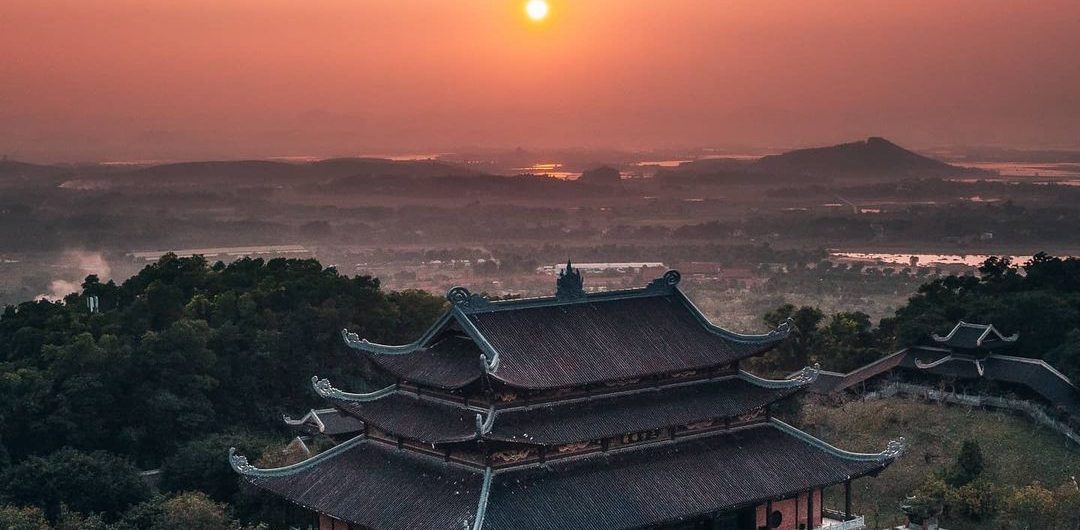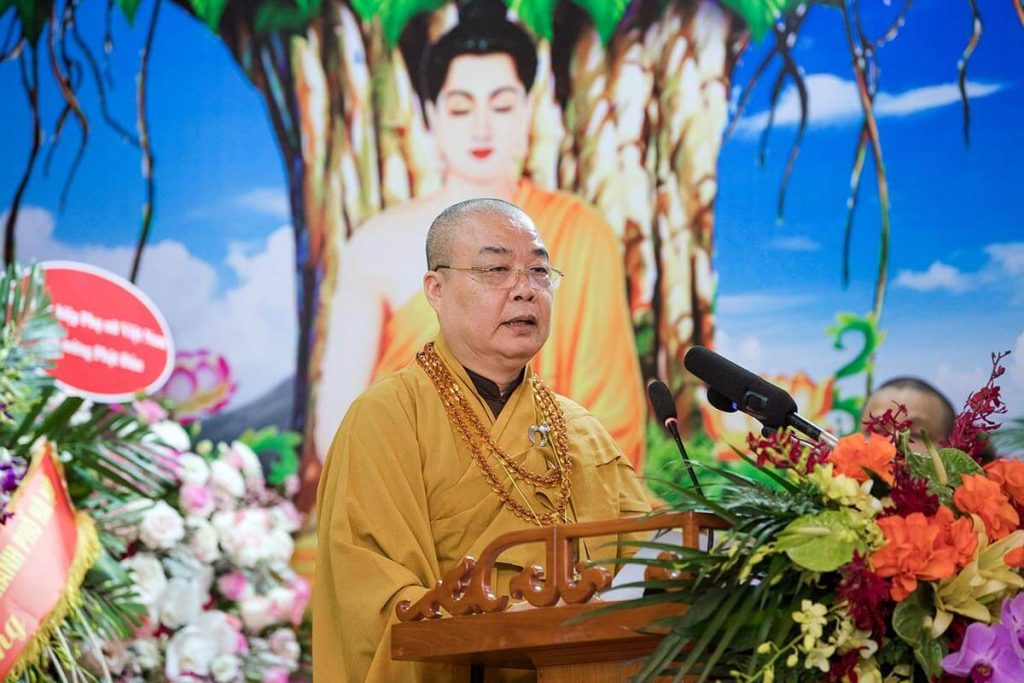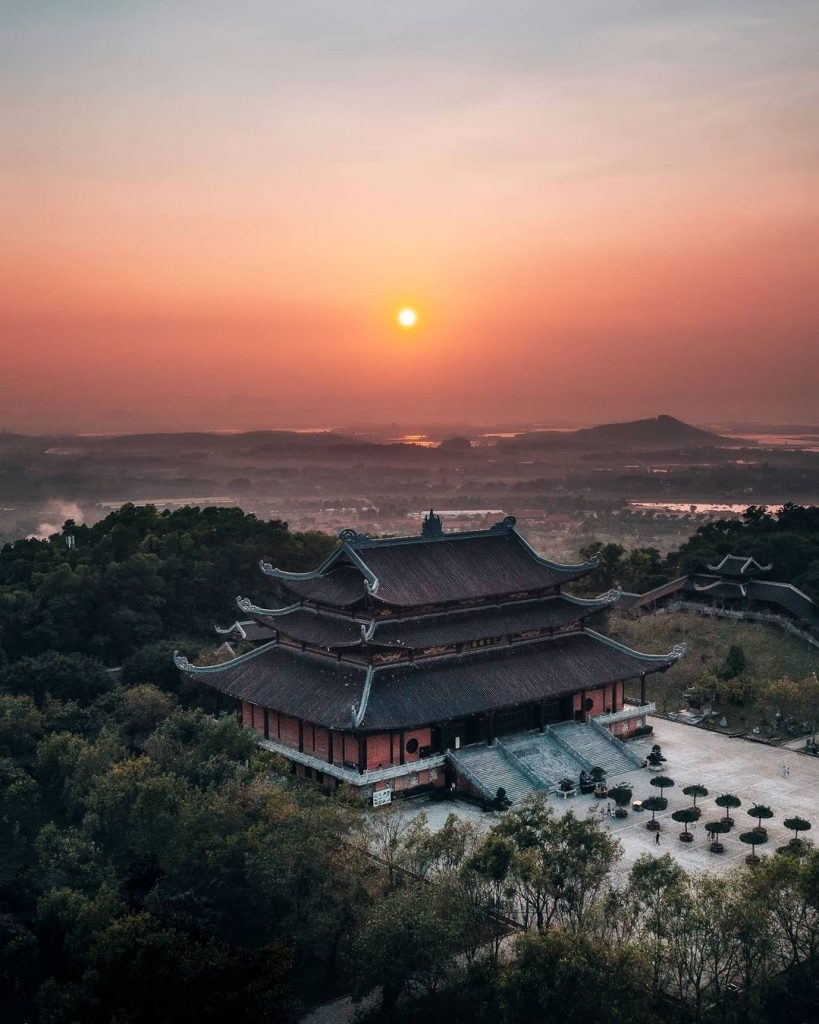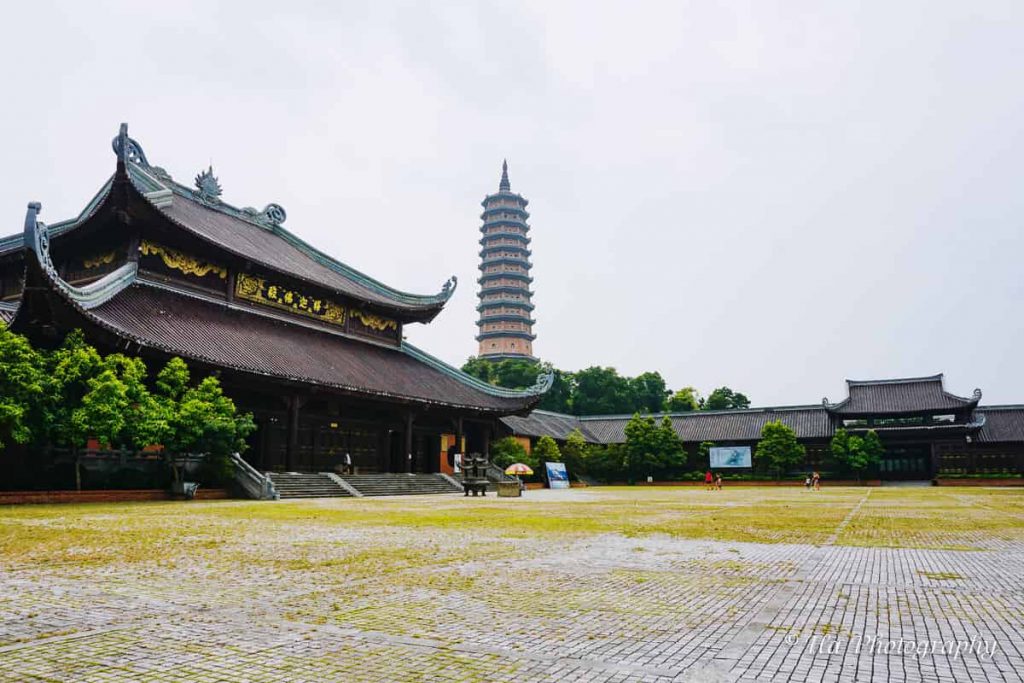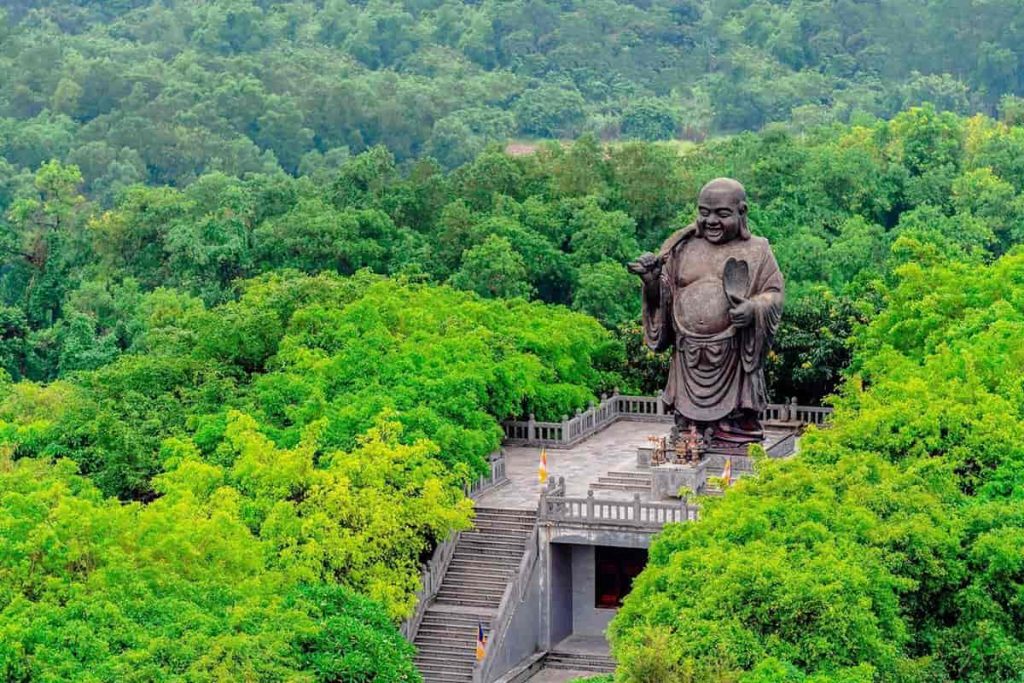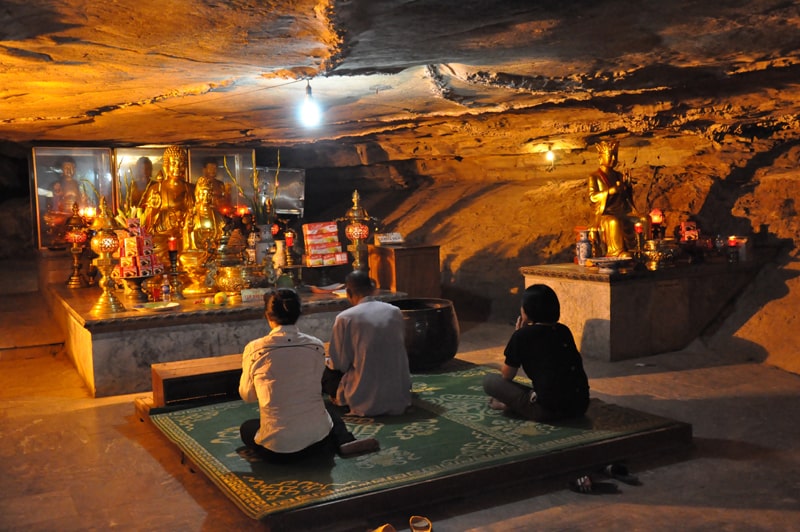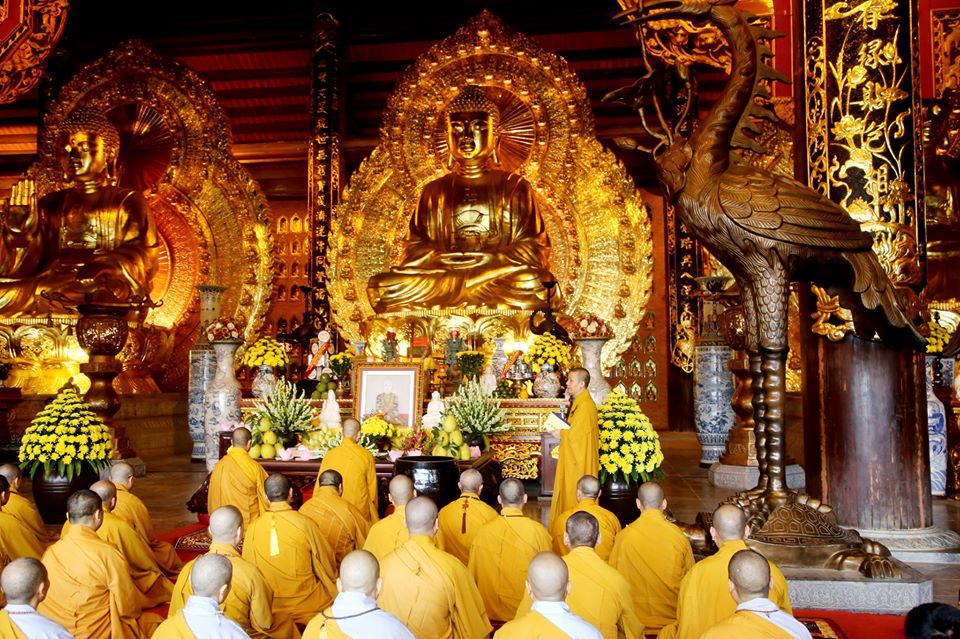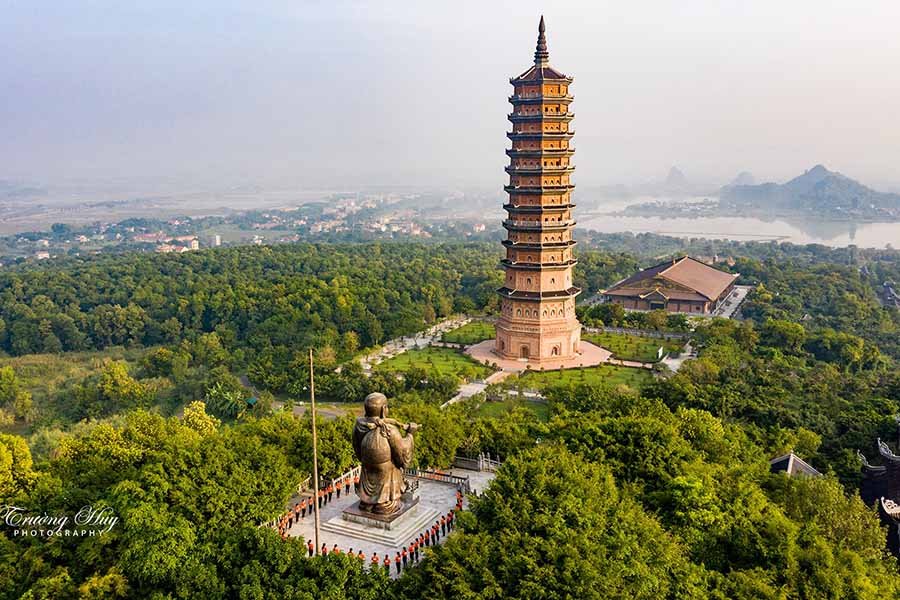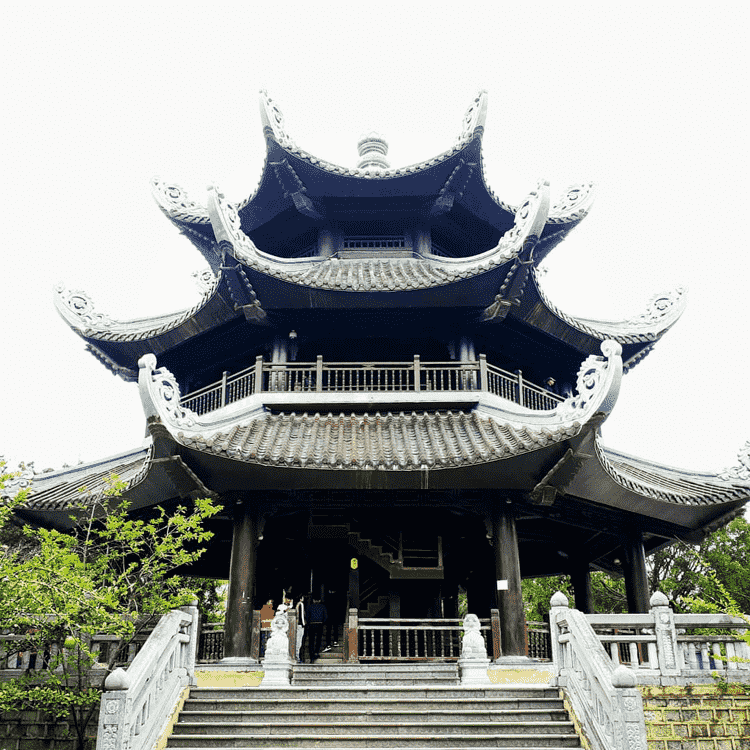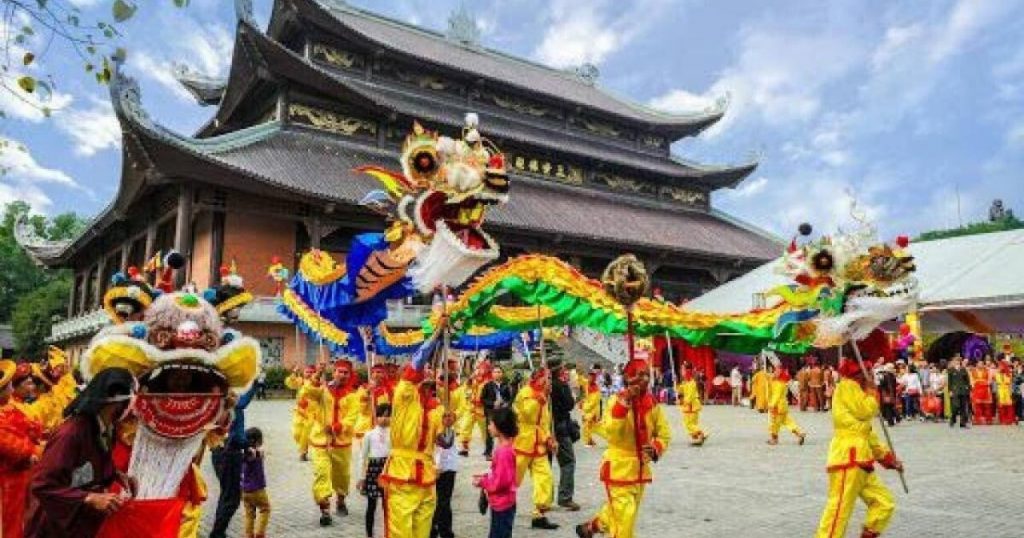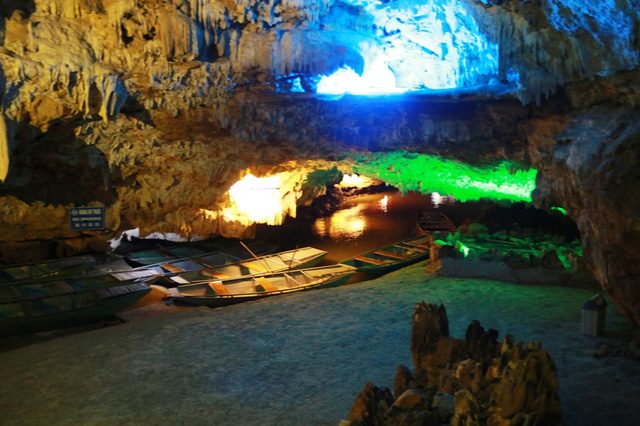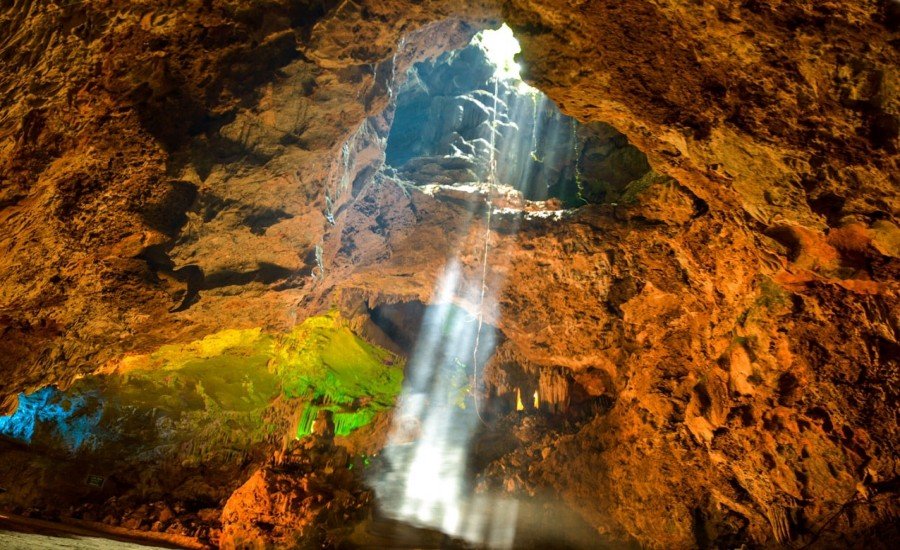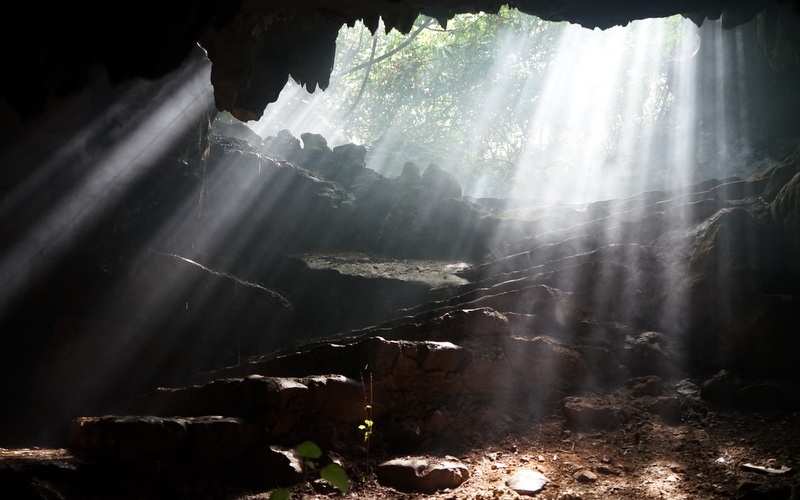Located in the ancient capital region, nestled in a strategic location, Trang An tourism complex is an extremely beautiful eco-tourism destination loved by many people. Below are detailed travel experiences in Trang An, Ninh Binh, that you can refer to!
Where is Trang An Tourism Complex in Ninh Binh Located?
This place boasts a system of limestone karst mountains that are 250 million years old. After hundreds of millions of years of cultural evolution and transformation, Trang An today carries a captivating beauty, very much Vietnamese, with a series of valleys, lakes, caves, flooded forests, or beautiful limestone mountain forests.
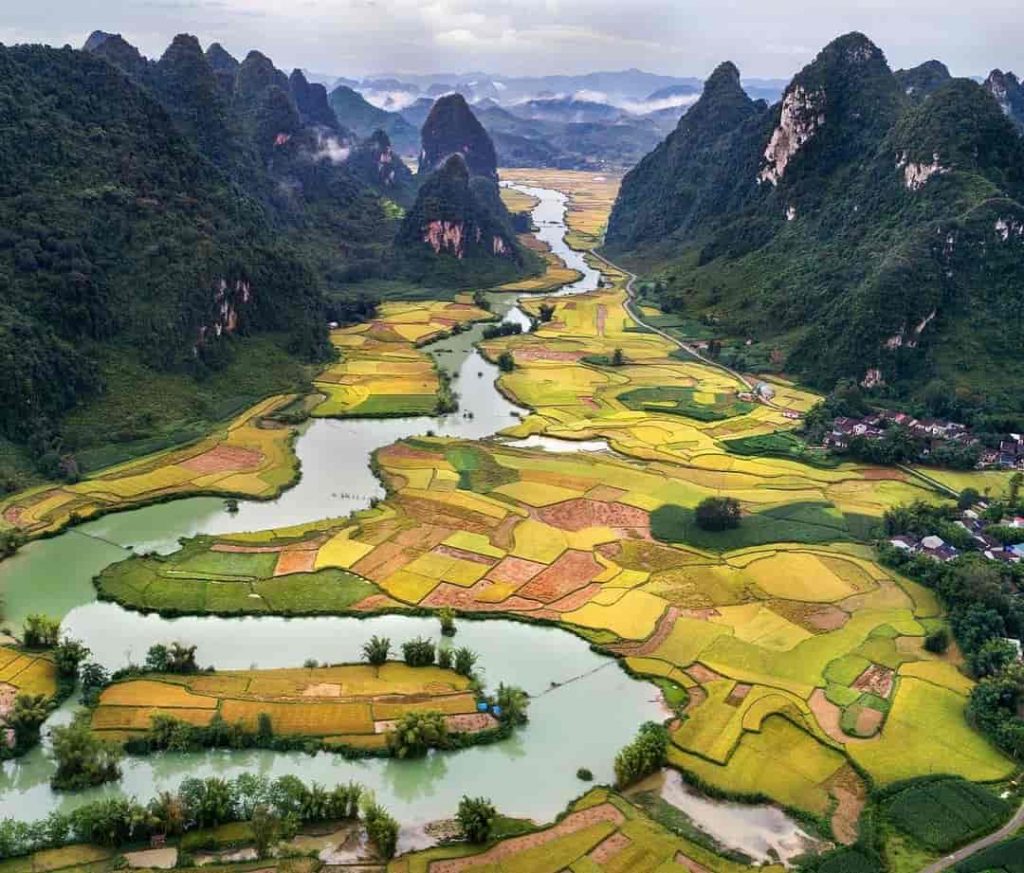
When visiting Ninh Binh, tourists can explore the entire scenic area, which includes Trang An, Tam Coc, Bich Dong, Hoa Lu Ancient Capital, and the specialized forest of Hoa Lu. Among them, the Hoa Lu Ancient Capital is situated in the north, Tam Coc – Bich Dong is in the south, and the Trang An ecotourism complex is located in the central area.
When Is the Best Time to Visit Trang An?
The most beautiful time to visit Trang An, Ninh Binh, is from around January to March in the lunar calendar. This is the spring season when the weather is pleasant, and it’s also when locals come here to pray for luck. It can be said that this is the most suitable time for tourists to combine sightseeing with springtime excursions.

If you want to participate in the traditional festivals of the Hoa Lu Ancient Capital, such as the Co Lau Festival, you should visit during the 8th to 10th days of the third lunar month. And if you want to experience the feeling of sitting on a boat on the river to admire the beautiful ripe rice fields or the fragrant lotus ponds, you should visit Trang An from June to August.
Transportation and Directions to Trang An, Ninh Binh.
The distance from Hanoi to Trang An is not too far, only 90 kilometers. Therefore, you can travel to Trang An by public bus, train, or personal vehicles like cars or motorcycles. The travel time is approximately 2-3 hours.
Travel Experience to Trang An by Public Bus:
From My Dinh Bus Station or Giap Bat Bus Station, you can take a public bus to Thanh Hoa, Nghe An, Ha Tinh to reach Ninh Binh City. The bus ticket prices can range from 50,000 to 80,000 VND. From Ninh Binh City, you can then hire a motorbike taxi or a taxi to get to the Trang An tourism complex.

Travel Experience to Trang An on Your Own with Personal Vehicles:
Due to the relatively short distance from Hanoi to Ninh Binh, you can use your own personal vehicles to travel to Trang An.
- If using a motorcycle: From the center of Hanoi, head towards Van Dien – Thuong Tin direction, and follow National Highway 1A to reach Ninh Binh City.
- If using a car: You can take the Phap Van – Cau Gie Expressway, then enter National Highway 1A and proceed to Ninh Binh City. After reaching Ninh Binh City, pay attention to the signs leading to Trang An on your right. Once you turn onto this road, continue for another 6-7 kilometers to reach Trang An.
Traveling by Private Vehicle with a Driver:
In addition to the above options, you can choose to rent a private vehicle with a driver in Hanoi through DanangPrivateCar.com’s service. With this private car service, the driver will pick you up anywhere in Hanoi and take you to Trang An quickly. After visiting Trang An, the driver can drop you off at your hotel in Ninh Binh or return you to Hanoi. With our private car service, you can also visit other attractions in addition to Trang An, such as Bai Dinh Pagoda, Hoa Lu, Tam Coc Ninh Binh,… To book a private trip from Hanoi to Ninh Binh today.
Which Route Is the Most Beautiful to Take in Trang An?
Trang An is primarily a landscape of rivers and waterways. Therefore, during your visit to Trang An, your primary mode of transportation will be by boat.
Which boat route should you take in Trang An? There are 3 routes for you to choose from when traveling by boat in Trang An:
- Route 1: Boat Station – Trinh Temple – Dark Cave – Bright Cave – Liquor Making Cave – Tran Temple – Ba Giọt Cave – Seo Cave – Son Duong Cave – Phu Khong Cave – Bao Hieu Pagoda – Khong Cave – Tran Cave – Quy Hau Cave – return to the boat station (duration: 3.5 hours)
- Route 2: Boat Station – Lâm Cave – Vang Cave – Holy Slide Cave – Suoi Tien Temple – Dai Cave – Vũ Lâm Palace – return to the boat station (duration: 2.5 hours)
- Route 3: Boat Station – Trinh Temple – Cloud Cave – Suoi Tien Temple – Earth Spirit Cave – Dai Cave – Vũ Lâm Palace – return to the boat station (duration: 3 hours).
Ticket Prices for Trang An in 2023
The entrance ticket to the Trang An tourist area includes the boat ride ticket.
Children’s Policy:
- Children under 1 meter tall: Free of charge.
- Children from 1 meter to 1.3 meters tall: 40,000 VND.
- Children over 1.3 meters tall: Full ticket price.
See More: Ticket Prices for Trang An Eco-Tourism Site 2023 and Ninh Binh Tourist Attractions.
What Does Trang An Tourist Area Offer?
Trang An Scenic Landscape Complex can be considered a “wonder” of extraordinary beauty in Vietnam. When you visit here, you’ll have the opportunity to sit on a boat, gently gliding through the labyrinth of rivers and waterways. The boat will take you to explore all the marvelous wonders at the Trang An scenic area. What could be more magnificent than sitting on a boat and passing through 12 mystical caves while admiring the majestic landscapes of Ninh Binh’s mountains and hills, leaving you in awe?
Explore Cultural Sites
When visiting Trang An, it’s essential to visit the spiritual and cultural sites that hold significant cultural values. These include temples and shrines located within the ecotourism complex, such as Trinh Temple, Tran Temple in Ninh Binh, Tu Tru Temple, Cao Son Temple, Suoi Tien Temple, Vũ Lâm Palace, Phu Khong Temple, and more.
Trinh Temple
Trinh Temple is a place of worship for the four guardian spirits of the Đinh dynasty. These guardian spirits were entrusted with safeguarding the royal treasures and precious metals of the king’s house. Legend has it that after King Đinh Tiên Hoàng’s victory over the Băng Hà rebellion, these four guardians concealed Đinh Toàn here to evade pursuit by Lê Hoàn. It was only when King Lê Hoàn ascended to the throne that these guardians met their fate for not yielding to his rule. Trinh Temple exhibits the architectural characteristics of Vietnamese temples, and in front of the temple are two bronze sacred birds guarding over the fragrant incense.
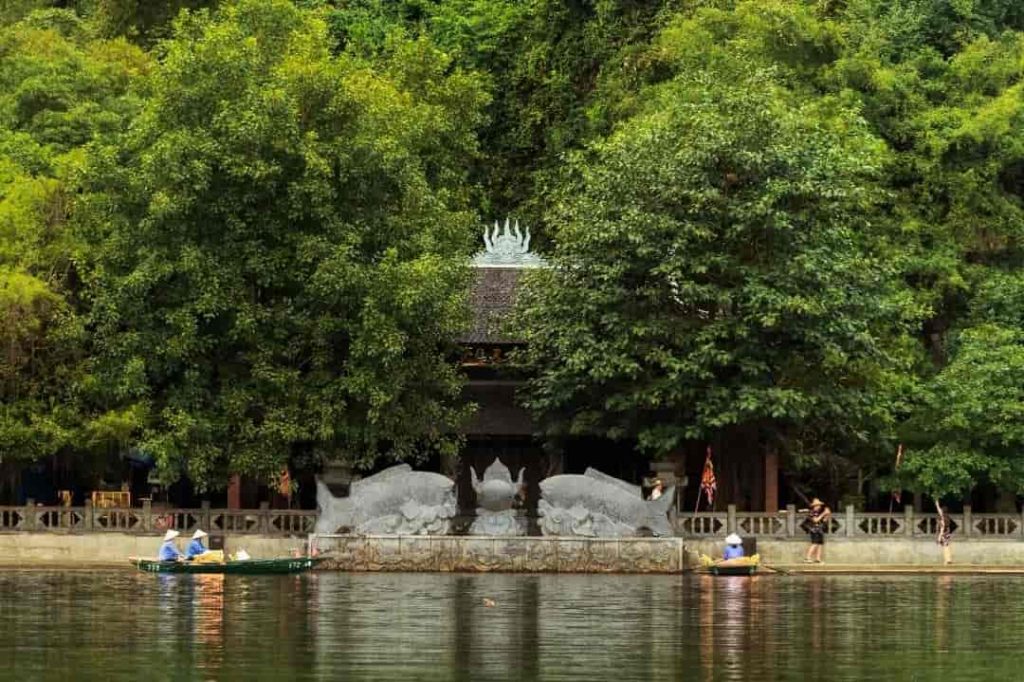
Tran Temple in Ninh Binh
Tran Temple is dedicated to the deity Quý Minh, a guardian spirit protecting the southern gate of the Hoa Lu Quadrangle. The temple was originally founded by King Đinh Tiên Hoàng. However, during the reign of King Trần Thái Tông, he renovated the temple and renamed it Tran Temple.

Tu Tru Temple
Tu Tru Temple is dedicated to four great generals of the Đinh dynasty: Nguyễn Bắc, Lưu Cơ, Đinh Điền, and Trịnh Tú. These four generals were close and contemporary to King Đinh Tiên Hoàng and played crucial roles in helping the king defeat the 12 lords, thus establishing the Đại Cồ Việt nation.
Phu Khong Temple
Phu Khong is situated in an exceptionally favorable location, with its back against the “empty cave” and a beautiful valley with crystal-clear water and a backdrop of mountains and skies. This is where the spirits of seven high-ranking officials during the Đinh dynasty are worshipped.

Legend has it that when King Đinh vanquished the rebellion, these seven officials buried the wealth and treasures in various directions to keep the secret of the king’s real tomb hidden. Touched by the loyalty of these seven officials, a general guarding the southern gate of Hoa Lu Quadrangle built an altar with eight incense holders to honor them. Later, the people established a temple here for worship. At the temple, you can see a thousand-year-old tree with two types of fruit: one round and one oblong.
Vũ Lâm Palace
Vũ Lâm Palace is a site located deep in the heart of the Trang An scenic area. The palace’s architecture features the distinctive style of Vietnamese temples and stands majestically amidst a land of mountains and water. It can be said that this is a must-visit and picture-worthy location that tourists should not miss when visiting Trang An.
Exploring the Mysterious Caves
Earth Spirit Cave
With a length of approximately 1500 meters, Earth Spirit Cave offers visitors a glimpse into intriguing mysteries. As the boat ventures deeper into the cave, you’ll witness fascinating formations of stalactites and stalagmites, resembling a treasure trove of sparkling wonders.
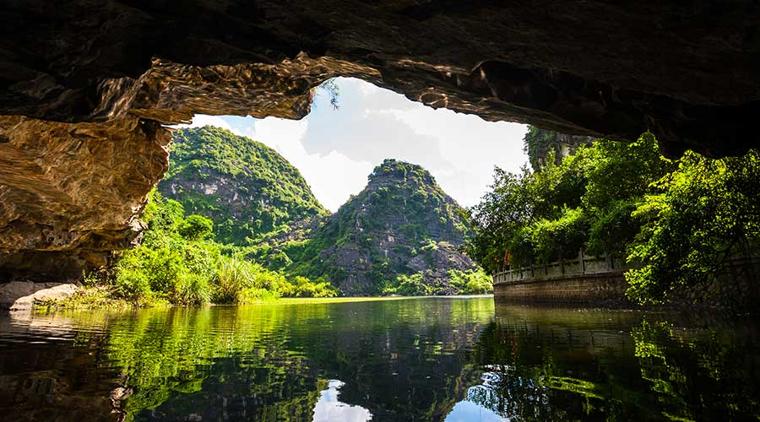
Liquor Making Cave
Within this cave lies an underground river with a depth of over 10 meters. The cave also features numerous limestone formations that resemble liquor jars, created by the sedimentation of the underground river over time.

Oracle Cave
The entrance to Oracle Cave is narrow and leads to a dark and densely covered passage where sunlight cannot penetrate. Oracle Cave was discovered in 2002, and during its exploration, researchers found a wealth of animal bones, fossils, and notably, some prehistoric artifacts, including traces left by ancient people belonging to the Hoabinh culture dating back approximately ten thousand years.

Bright Cave – Dark Cave
Similar to Ha Long Bay, Trang An also boasts its own Bright Cave and Dark Cave. Bright Cave is adorned with peculiarly shining limestone formations that sparkle when illuminated by light. On the other hand, Dark Cave features a vast cavern within, which remains shrouded in darkness until the boat reaches the cave’s exit. When you emerge from the cave, the breathtaking scenery of the picturesque Trang An landscape with its waterways and mountains bathed in sunlight will leave an unforgettable impression on you.
What to Eat When Traveling to Trang An, Ninh Binh?
When it comes to local delicacies, Ninh Binh in general, and Trang An in particular, offer a wide range of delicious treats that every visitor should not miss during their trip.
- Cơm Cháy Ninh Bình (Ninh Binh Crispy Rice): This is a must-try when you visit Ninh Binh. The crispy rice is served with flavorful shredded pork, creating a delightful combination. As a well-known local specialty, you can find cơm cháy available at various places in Trang An. Don’t forget to buy some to take home as a memorable souvenir from your Trang An journey!
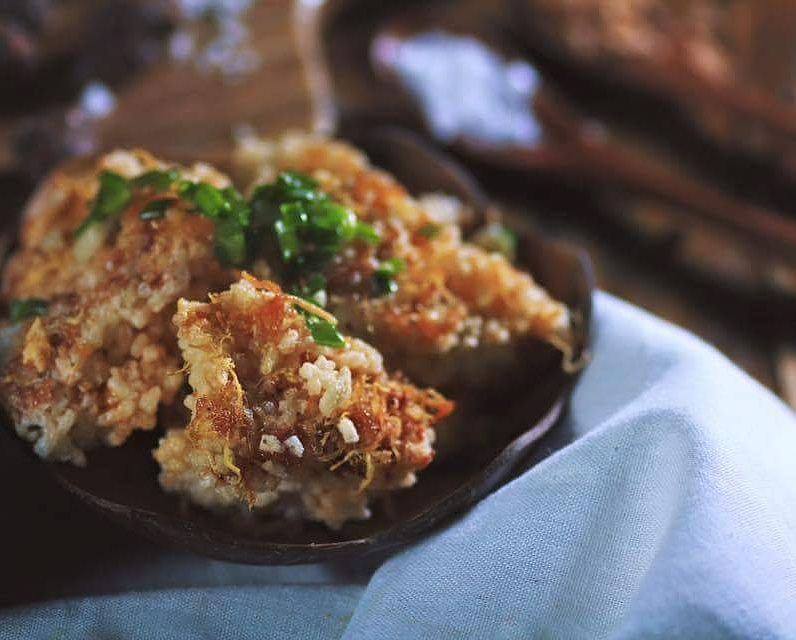
- Thịt Dê Núi (Mountain Goat Meat): Mountain goat meat is one of the specialties that you cannot miss when visiting Ninh Binh. These goats roam freely in the rocky mountains of Ninh Binh, resulting in tender and flavorful meat. Mountain goat meat can be prepared in various dishes such as nem dê (goat spring rolls), grilled goat, steamed goat, goat with sesame sauce, goat hotpot, or goat served with lime, and each dish is exceptionally delicious.
- Xôi Trứng Kiến (Ant Egg Sticky Rice): Xôi trứng kiến is another must-try local delicacy in Trang An. The kiến eggs used here are brown ants’ eggs. After being cleaned, they are sautéed with dry shallots and chicken fat, then mixed into hot sticky rice. The rich, creamy taste of ant eggs combined with the fragrant, soft sticky rice creates a unique and enticing dish that you won’t forget.
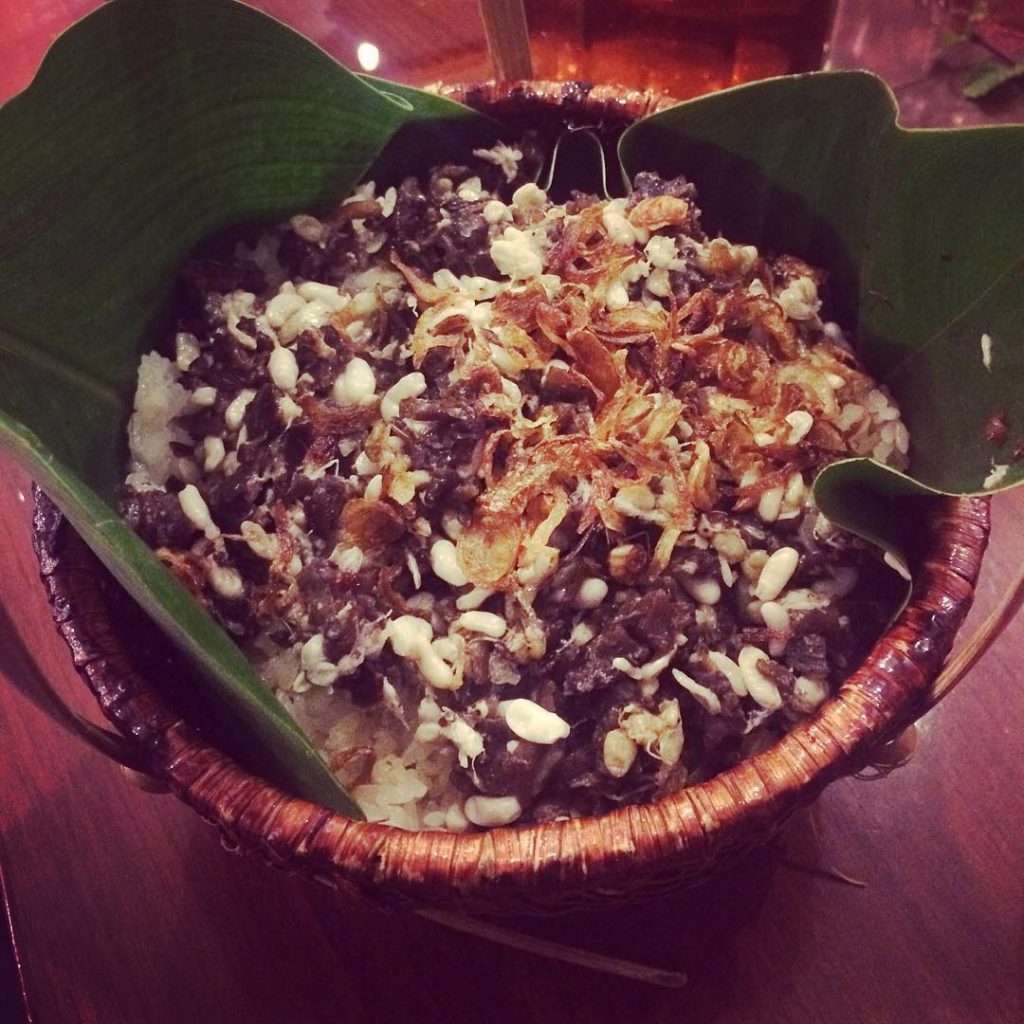
- Miến Lươn (Eel Vermicelli): Miến lươn is a noodle dish that’s prepared differently in Ninh Binh, with a special flavor that sets it apart. The vermicelli is served in a flavorful broth with eel, fresh herbs, and sliced banana flower. The dish is known for its eye-catching presentation, rich taste, and the fresh ingredients used.
- Ốc Núi Ninh Bình (Mountain Snails): Mountain snails in Ninh Binh are unlike regular snails; they live in the mountains and feed on various wild herbs, including some medicinal plants. These snails have high nutritional value and are even used in traditional medicine for conditions like joint pain or arthritis. In addition to their medicinal use, mountain snails are also transformed into delicious dishes like boiled snails, grilled snails, stir-fried snails with tamarind sauce, or ginger-steamed snails.
These are just a few of the delectable dishes you can savor when traveling to Trang An, Ninh Binh, offering a unique taste of the region’s culinary treasures. Enjoy your culinary exploration!
Accommodation Tips When Traveling to Trang An, Ninh Binh.
When visiting Trang An, there are numerous lodging options where you can rest after your tiring exploration. Nowadays, Ninh Binh offers a wide range of accommodation choices, including homestays. Here are some beautiful and budget-friendly homestay options for your reference:
- Quốc Khánh Bamboo Homestay
- Address: 479B, Trường Yên, Hoa Lư, Ninh Bình.
- Price Range: 750,000 VND for 2 people per night.
- Phone: 098 805 1291.
- Tam Coc Westlake Homestay
- Address: Thôn Trường An, xã Trường Yên, Hoa Lư, Ninh Bình.
- Price Range: 675,000 VND for 2 people per night.
- Phone: 096 720 3962.
- Trang An Farm Stay
- Address: Tràng An, xã Trường Yên, Hoa Lư, Ninh Bình.
- Price Range: 600,000 VND for 2 people per night.
- Phone: 0123 775 8888.
- Hoalu Ecolodge Homestay
- Address: Tràng An, Trường Yên, Hoa Lư, Ninh Bình.
- Price Range: 370,000 – 400,000 VND per room.
- Phone: 091 567 4679.
- Ninh Bình Panorama Homestay
- Address: Ninh Xuân, Hoa Lư, Ninh Bình.
- Price Range: 450,000 VND for 2 people per room per night.
- Phone: 094 844 3616.
These homestays offer comfortable and affordable options for travelers to enjoy their stay in Trang An, Ninh Binh. Make sure to contact them directly for the most up-to-date pricing and availability.
Convenient transportation and its proximity to Hanoi make Trang An a worthy destination for every traveler on their journey to explore Vietnam, wouldn’t you agree? For international travelers, all you need to do is book a flight to Hanoi, then use a private car from DanangPrivateCar.com’s to travel just over 90km to reach Trang An. It’s not too difficult, so let’s hit the road!


